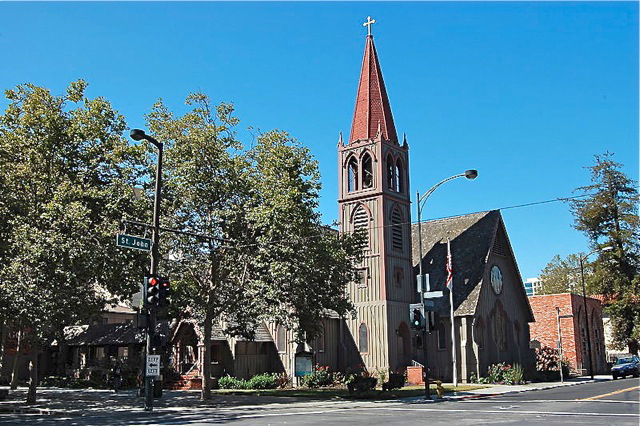
Two news stories caught my attention recently: one local, one far away. Both seem to say something about history’s impact on the present.
Many religions have “saints,” holy people whose lives are held up as examples for the faithful. In Christianity, this was originally a local matter, with bishops approving selections suggested by the people. Now, of course, churches that proclaim new saints have established elaborate procedures for such proclamations.
Recently I read about the “first woman saint” of the Episcopal Diocese of El Camino Real. She was officially added to the diocesan calendar in 2009, and a special commemoration was held at San Jose’s Oak Hill Cemetery on Sept. 3.
Anna Besent Cassey was born in South Carolina to freed African slaves in 1833. The family moved to San Francisco in the 1850s, where she met Peter Williams Cassey, who came from a family of clergymen and abolitionists; they married late in the decade.
Soon they moved to San Jose and were founding members of Trinity Episcopal Church. They opened a school and St. Phillip’s Mission for Colored People during the Civil War. In 1866, Peter was ordained a deacon, and six years later founded a church in San Francisco.
Meanwhile, Anna shouldered most of the responsibilities for the San Jose work, educating and caring for many ethnic minority children who came from far away to attend the school. She died in 1875, the same year that the California Supreme Court outlawed racial segregation in the state’s public schools.
Although the school and institute are long gone, the church they helped establish, Trinity Episcopal Cathedral, has become an important part of downtown San Jose and is currently celebrating its 150th anniversary.
The other cathedral story is from Leicester, near the center of England. Anyone who has studied Shakespeare knows about King Richard III, the main character of one of his history plays. Based on this, the conventional opinion of Richard is that he was a child-killing despot.
In the late 15th century, England was wracked by the Wars of the Roses: the York and Lancaster families fought each other to gain control of the nation. When Edward IV died in 1483, his 12-year-old son should have inherited the throne. Because of his age, however, his uncle Richard became “protector,” moving Edward and his younger brother to the Tower of London. Neither of the young princes was ever seen again, and Richard became King himself.
When he was killed in battle two years later, the victorious army hastily buried Richard in a monastery that was later destroyed as part of the great dissolution. His body disappeared.
Last year, during some construction in a municipal parking lot, workers uncovered a grave that was determined to contain the remains of Richard. English law requires that any human remains from this site be reinterred inside nearby Leicester Cathedral.
However, controversy has arisen. One journalist points out that Richard died before the English Reformation and “was, of course a Catholic … Had he not been toppled by the wretched Henry Tudor, there would have been no Henry VIII. We might still be a Catholic country with a Catholic monarchy.”
While, no doubt, a court will have to rule on the plan, the Anglican Cathedral is in the process of planning a royal tomb where “the King will be buried with dignity following requirements of the law and in compliance with the best archaeological and ecclesiastical practice.” Meanwhile, there has been no new information about the fate of the two princes in the tower.
Chuck Flagg is a retired teacher with a passion for religion. Reach him at cf****@**********rs.com.









